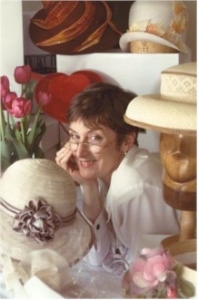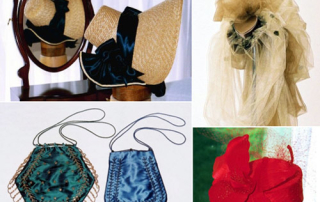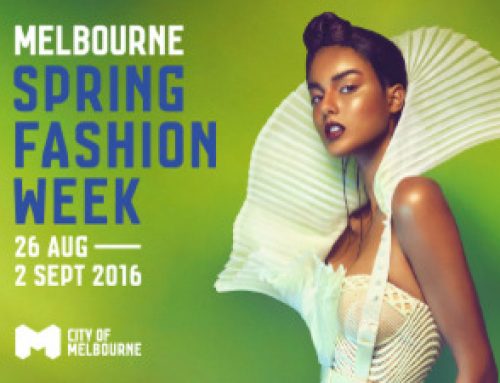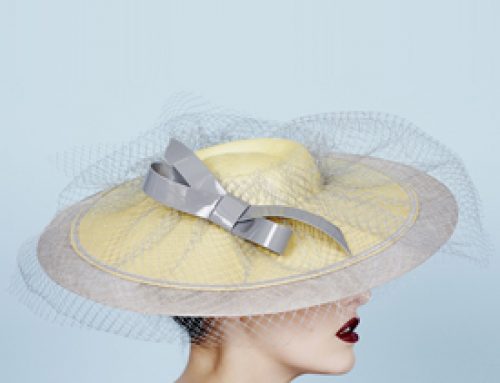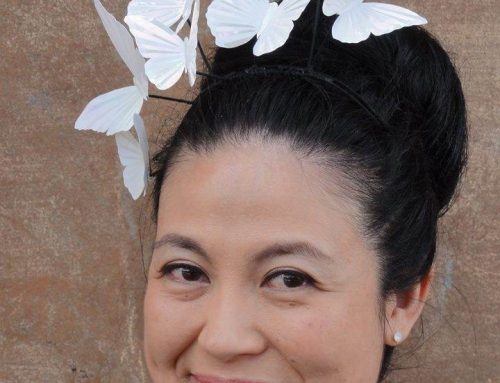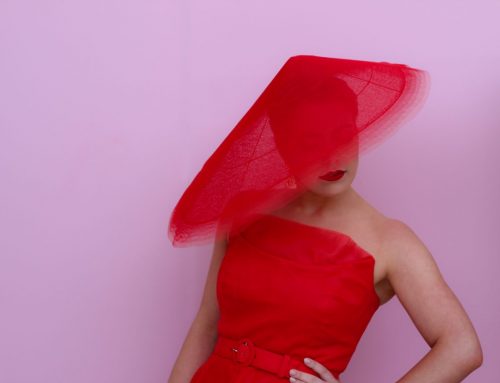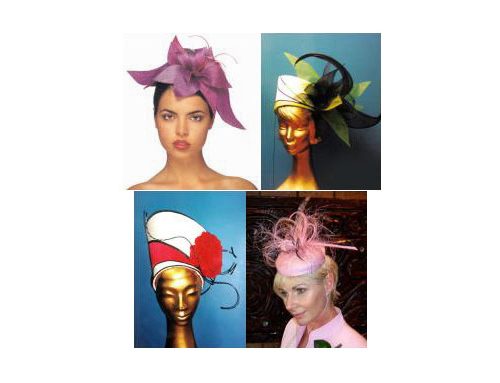I was Period Costume Designer for National Historic Sites Branch of Parks Canada (a Canadian Government agency that runs many historic sites across Canada). My job required me to research historic clothing cut and construction and create historically accurate reproduction costumes that were then worn or exhibited in these sites. Naturally, hats are part of a complete costume. Before I worked at Parks Canada, I had no special interest in headwear. I crocheted my winter hats to match my coats. However when I began creating reproduction costumes, I was fascinated by hats – their design, materials and construction. I found the sculptural quality of a hat intriguing.
Where and did you learn millinery?
I studied on the job under Senior Period Costume Designer, Theresa Ingram, at Parks Canada and at Richard Robinson’s L’académie des Couturiers Canadiens, Ottawa, in the 1970s and early 80s. I continued studying historic millinery by research and observation of examples in collections throughout Canada and the United States.
When is a busy period for millinery in Canada?
The hat making season begins for me in February or March because those are the months when government departments determine their summer exhibition needs and, since March 31 is the ‘year-end’ for many museums and government departments, I often get orders to fill by that date. Otherwise, the summer and bridal requests begin in March and April. I will be busy with bridal until the end of July and sometimes September. Winter orders begin in late August for October/November. The consulting and teaching is a year-round activity which means I am busy year round and extra busy from March to July. Thankfully, the hat orders are ‘scarce’ for a week or two in August and just before Christmas because I like to recharge my creative batteries and take care of my family.
There isn’t a particular event, as such, in the Ottawa area that would rival an event such as Ascot. However, there are many events attended by diplomats and politicians who require beautiful hats.
How long have you been a milliner for? Where else did you work?
I have been making hats professionally since the 1970s, but I also supplied my dolls with hats when I was a girl. I worked at Parks Canada for 22 years. I had a part-time millinery business in the late 80s, early 90s and have been working (as a milliner and consultant) for myself full time since 1998.
Where do you get inspiration for your designs?
I am influenced by couture houses in Europe and millinery designers in the United Kingdom, but I look to fashion history for inspiration as well. I am not a slave to the ‘latest craze’ but create works that are beautiful and compliment my clients. I collect antique and vintage hats for their shapes, decorative trims and unusual materials. My earliest piece is a mourning bonnet similar to what Queen Victoria was depicted wearing in her later years and I have a growing collection of vintage bridal veils and headpieces.
What has been your most enjoyable commission?
Usually, my most favourite hat is the one I have just finished. However, in general, I get the most personal satisfaction out of making historical reproduction hats because of the challenge to recreate the look and essense of something that hasn’t been made or worn for decades or centuries.
My most favourite recent bridal hat was a tiny tricorn with a heart-shaped crown covered with bronze silk satin which matched the bride’s dress… and then there was the large brimmed, black balibuntal trimmed with hand painted imitation onion grass, reminiscent of a late Edwardian hat.
How would you describe your style of hats?
Classic styles with a twist – elegant, smart, wearable, finely crafted. I pride myself in creating hats that fit well and make my clients look beautiful.
My reproduction millinery and accessories are carefully researched, and finely crafted with the finest and most appropriate materials possible within the client’s budget.
Who do you make hats for? Church goers? Brides? Everyday winter wear?
I make historic reproduction hats and accessories for museums, historic sites, and people who use them for business or pleasure. My modern hats are mostly bridal; brides who want something different, as well as wedding attendees. I also supply hats to an exclusive clothing designer in the Ottawa area. The vast majority of the modern hats I make are for summer wear. However, I do many dressy winter hats (fur felts) for religious events.
I also consult for museums, private collectors and government departments and I teach millinery to whomever wishes to learn.
What materials and techniques do you favor?
I should say that I prefer making pattern hats (fabric/sewn) the least. I find them a little too restrictive and a lot of work for the results I achieve. This sounds terribly negative, but it seemed easier to tell you what I like the least than list all the materials and techniques I love to use. However, I work with most every traditional millinery material – straws, fur felt, wire frame, buckram and wire, velvet, silk, lace, linen – and new materials like sinamay. I make my own flowers by stiffening and manipulating silk and other less traditional fabrics into orchids, roses, poppies, etc. I also embellish my hats and accessories with embroidery and beading.
All my lined hats are lined with silk. I find it the nicest fabric to put against the hair and, of course, it adds an extra touch of glamour to each hat.
Any other interests?
My other interests include creative and historic needlework of all kinds, beading and restoration of embroideries. My hobby is researching and collecting 20th century blankets which were manufactured or used in Canada. I am building a database of blanket labels with the ultimate goal of creating a dating tool.


